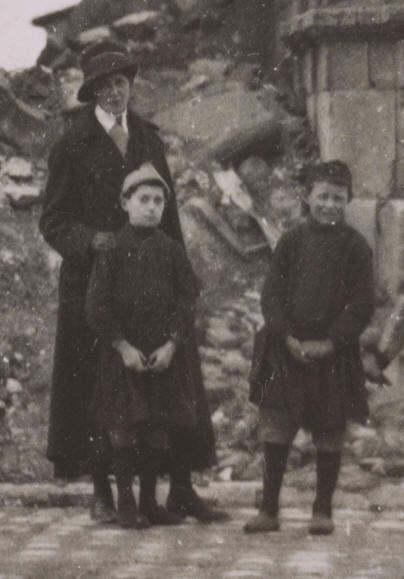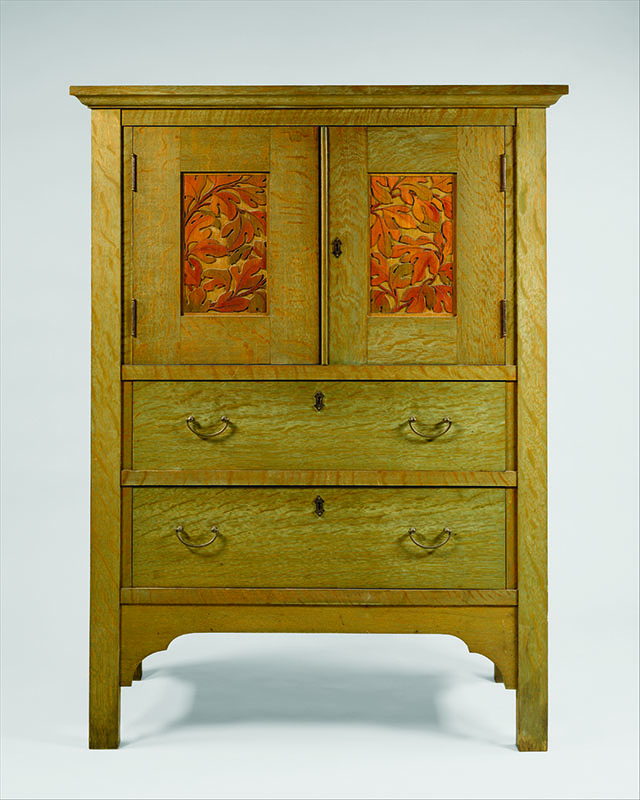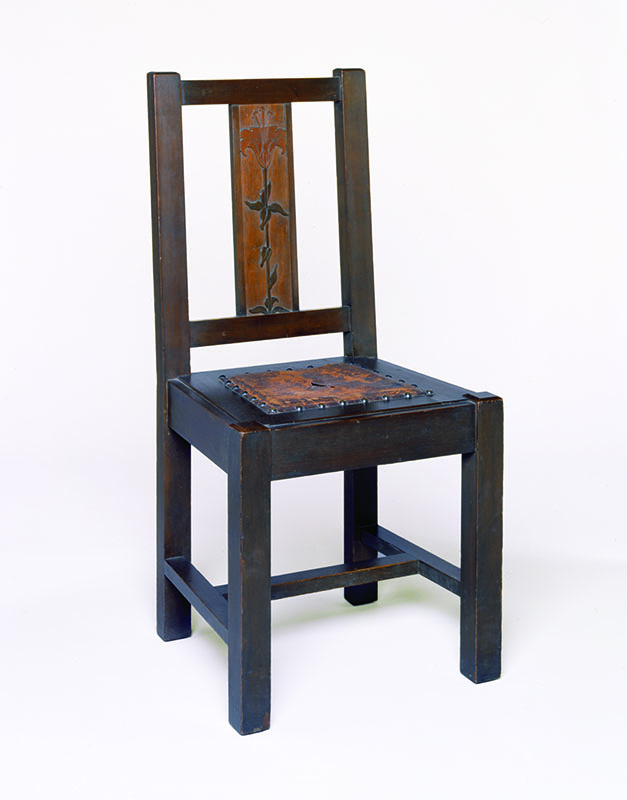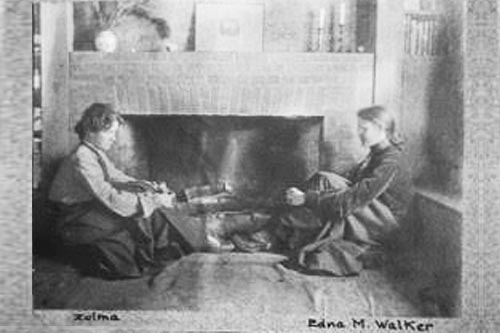

Partner Zulma Steele
Queer Places:
Pratt Institute, 200 Willoughby Ave, Brooklyn, NY 11205
Byrdcliffe, 380 Upper Byrdcliffe Rd, Woodstock, NY 12498
 At
the beginning of the century, Edna M. Walker (born 1880) was an accomplished
craftswoman, making Arts and Crafts furniture in the Byrdcliffe artist's
colony in Woodstock, New York. During the war, she joined thousands of other
American women who volunteered to work for the American Red Cross. The
volunteers' energy played a role in the European recovery in the immediate
aftermath of the war.
At
the beginning of the century, Edna M. Walker (born 1880) was an accomplished
craftswoman, making Arts and Crafts furniture in the Byrdcliffe artist's
colony in Woodstock, New York. During the war, she joined thousands of other
American women who volunteered to work for the American Red Cross. The
volunteers' energy played a role in the European recovery in the immediate
aftermath of the war.

Linen press made at the Byrdcliffe Arts and Crafts Colony, c. 1904, with door face insets designed by Edna M. Walker (b. 1880). Metropolitan Museum of Art, Friends of the American Wing Fund and Mr. and Mrs. Mark Willcox Jr. Gift.

Side chair made at the Byrdcliffe Arts and Crafts Colony, c. 1904, with splat designed and painted by Zulma Steele (1881–1979). Layton Art Collection Inc.; photograph courtesy of the Milwaukee Art Museum, Wisconsin.

Inspired by John Ruskin and William Morris, Ralph Radcliffe Whitehead, the son of a wealthy British textile mill owner, and his American wife, Jane Byrd McCall, had been trying to establish a self-sustaining artists’ community for years. But by the early 1900s they only had two failures to show for it, one in California, the other in Oregon. They persisted. In 1902 Ralph Whitehead was touring New York State, already home to Elbert Hubbard’s Roycroft and Gustav Stickley’s Craftsman Workshops, and was shown a boulder-strewn, fifteen hundred–acre site at the foot of Mount Guardian in the Catskills. He found it enchanting and purchased the land.
Whitehead built cottages, along with a pottery, an art studio, a dairy, and a library. He invited a diverse group of painters, furniture makers, ceramists, and textile artisans to Byrdcliffe. Self-sufficiency being the goal, much effort was expended on outfitting a woodshop, the output of which, it was hoped, could be sold at shops in New York City. “It is our intention to make furniture of a simple kind, which shall be good in proportion, and to which distinction may be given by the application of color and of carving by artists’ hands,” Whitehead wrote in Handicraft in 1903.
Edna Walker was one of the most notable artists at Byrdcliffe, where she lived with her partner, Zulma Steele. Byrdcliffe did not last long as a commercial venture—the furniture proved too costly and Ralph Whitehead’s autocratic ways alienated many artisans. But it continued as a creative enclave, with artists as various as Milton Avery and Bob Dylan renting cottages there over the decades. Byrdcliffe stayed in the Whitehead family until 1976, and is now operated by the Woodstock Byrdcliffe Guild, and continues to draw artists and artisans to the area.
My published books: